Foul Play
PACKAGING
LAYOUT
ILLUSTRATION
Welcome to "Foul Play," a thrilling murder mystery dinner party that will put your detective skills to the test. This unique and immersive game takes inspiration from mid-century modern design and combines it with a new whodunit storyline. Each element of the game, from the invitations to the evidence, has been designed to transport players to a world of suspense and board games. Get ready to gather your friends and family, put on your thinking caps, and solve a murder case.
WHY A MURDER MYSTERY?
My decision to fully write and design a murder mystery box first stemmed from my love for games. My family and I are extremely competitive and overly animated— murder mystery games are a perfect combination of the two.
A murder mystery party is an event where guests are given the opportunity to solve a murder together while being in character. The guests must work together to reveal which person among them is the murderer. Guests should keep an eye out for hints about the killer’s means, motive, and opportunity that only the guilty suspect could have. At some point throughout the night, the murderer will also be made aware that they are guilty and try to stay undetected.
THE CONCEPT
The challenge for this project was coming up with a murder mystery party that would stand out among the others that already exist. I decided to lean into the audience that would already be interested in a murder mystery— people who love games. What better way to target this niche group than a game-themed game? Guests play as traditional board games; Their identities are drawn from the strategies used to play their assigned game. For example, Monopoly is a property owner and Trivial Pursuit is a college student. Each character was given a unique backstory, personality, and motive for the murder. This helped in creating a compelling and engaging storyline for the players.
THE NAME
When coming up with a name for this project, I considered thinking about different words that could correlate to both murder and amusement. After shuffling through many names, I was approached with one I knew felt right. “Foul Play” is a term used to describe criminal violence or activity that leads to someone’s death. It can also be used to describe an unsportsmanlike play in a game. Foul play encompasses the essence of what a murder mystery game night should feel like. Everybody is equally there to protect themselves as they are to solve an investigation. The name also reminds the guests why they're there: a murder has already occurred, but the foul play has yet to end.
Brainstorming for character relationships, storyline, motives, etc.
THE STORYLINE
After I conceptualized the theme and premise of the murder mystery, I really dove into the nitty gritty. I started with who I believed would be the best victim, Clue. As a player in the game of Clue, it is your job to become a detective and figure out as much information as possible. As both a character and victim in Foul Play, Clue is portrayed to have been a detective. Knowing too much information can put a lot of targets on someone’s back, making Clue the perfect victim. But, who is guilty? Play to find out.
The rest of the narrative came through lots of research and even more writing. The research process involved analyzing other types of murder mystery games to understand their structure and content. This research helped identify the key elements of a murder mystery game, including the storyline, structure, and clues. The clues for the murder mystery game were developed to be challenging but solvable. They are based on the characters' backstories, interactions, and motives.
THE STRUCTURE
The night is divided into 3 rounds; The goal is to solve clues to gather more information. Every character is given 3 different objective envelopes, one for each round, which will only be opened at the beginning of the correlating round. Inside the envelope, guests find a card with their individual objectives. These objectives will include information that they are prompted to share or complete before the round is over. Some of the guests will also be given additional clues in their envelopes which they should share with the group. These clues are to help complete the goal of each round; To open the corresponding evidence bag, analyze its contents, and discuss. The length of each round will be determined by the host depending on the guest's ability to discuss objectives and fully inspect the information given.
Once the characters, storyline, structure, and clues were fully decided for the night, it was time to start the fun part, designing. The process would include:
Back of the Foul Play Box
CONTENTS
Game Box
Invitation Packages
- 8 Character Cards
- Invitation Cards
- Instruction Cards
Host Info
- Crime Scene Report
- Host Guide Book
- 9 Name Tags
- Accusation Cards
- Solution Envelope
Character Info
- 27 Individual Objectives
- 3 Lock Bags (combination locks)
- Super Secret Evidence
INSPIRATION
Knowing that I wanted a mid-century modern aesthetic to the game, I drew lots of inspiration from Saul Bass and Theo Inglis. Mid-century modern graphic design is known for its sleek, minimalistic aesthetic and use of bold colors and shapes. Saul Bass’ famous movie poster designs use simple shapes, bold typography, and minimalistic color palettes. Theo Inglis uses bold, geometric shapes and bright colors, and he is known for his use of type and layout to create a strong visual impact. For my murder mystery, I drew inspiration from these two artists in terms of creating a minimalistic, yet striking visual identity that captures the essence of mid-century modern design.
Work from Saul Bass and Theo Inglis
LOGO DESIGN
The design process for creating the logo for “Foul Play” was a unique challenge. I wanted to create a logo that reflected the theme of the murder mystery while also incorporating elements of mid-century modern design. After experimenting with various concepts and ideas, I landed on the idea of using a magnifying glass as the "O" in Foul and a clue piece as the "A" in Play. The magnifying glass represents the mystery aspect of the game, while the clue piece nods to the game-playing aspect as well as the victim, Clue.

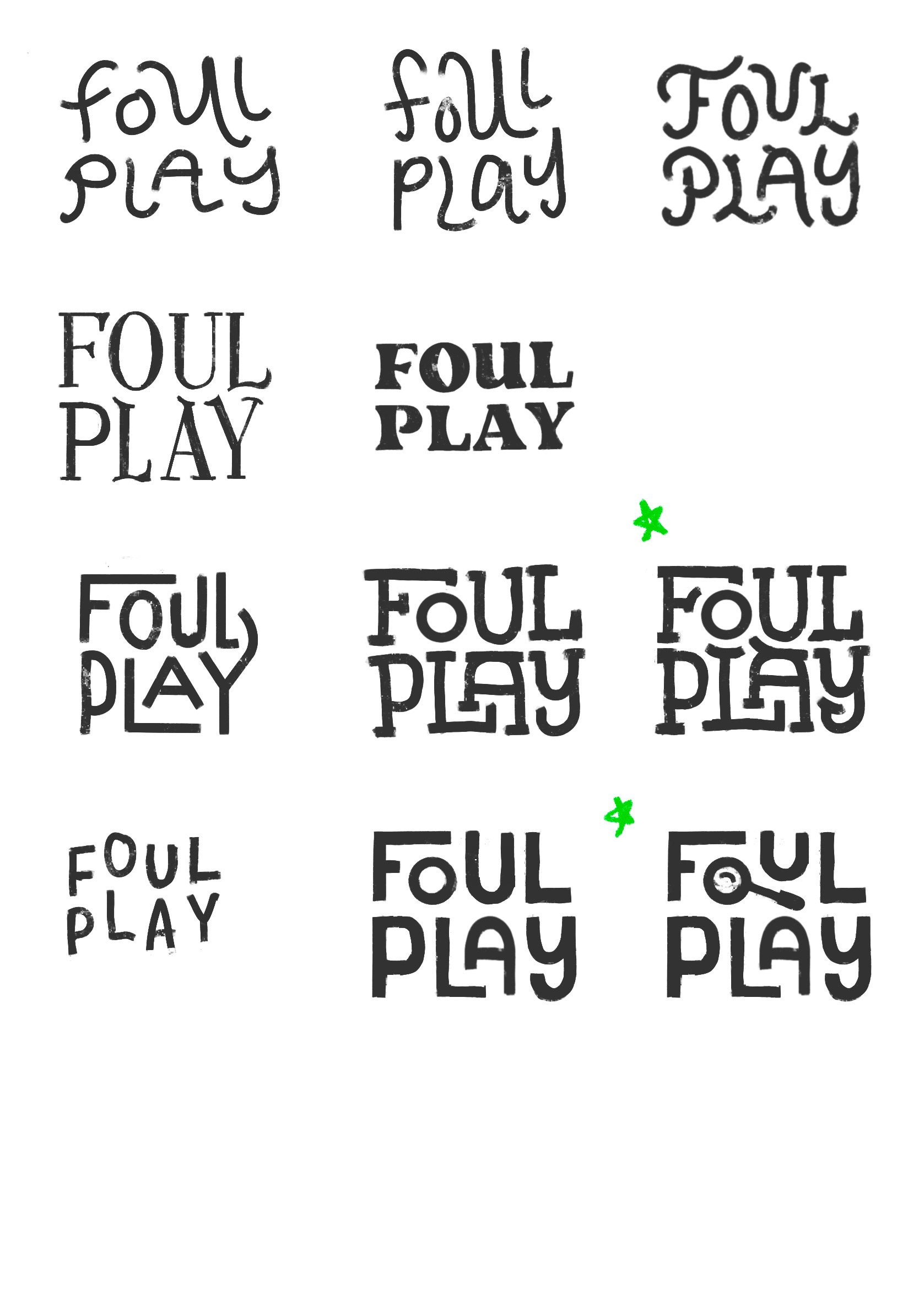

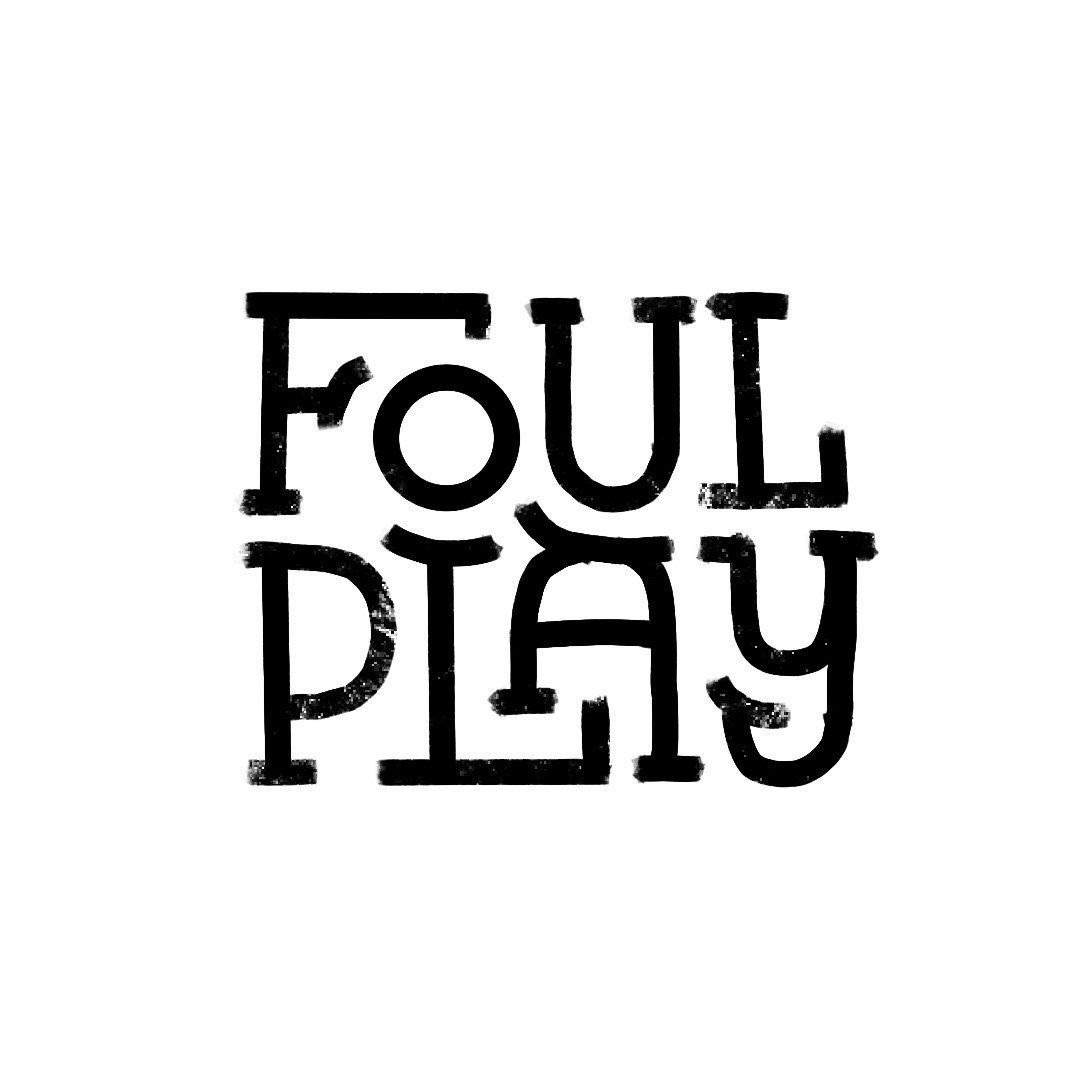
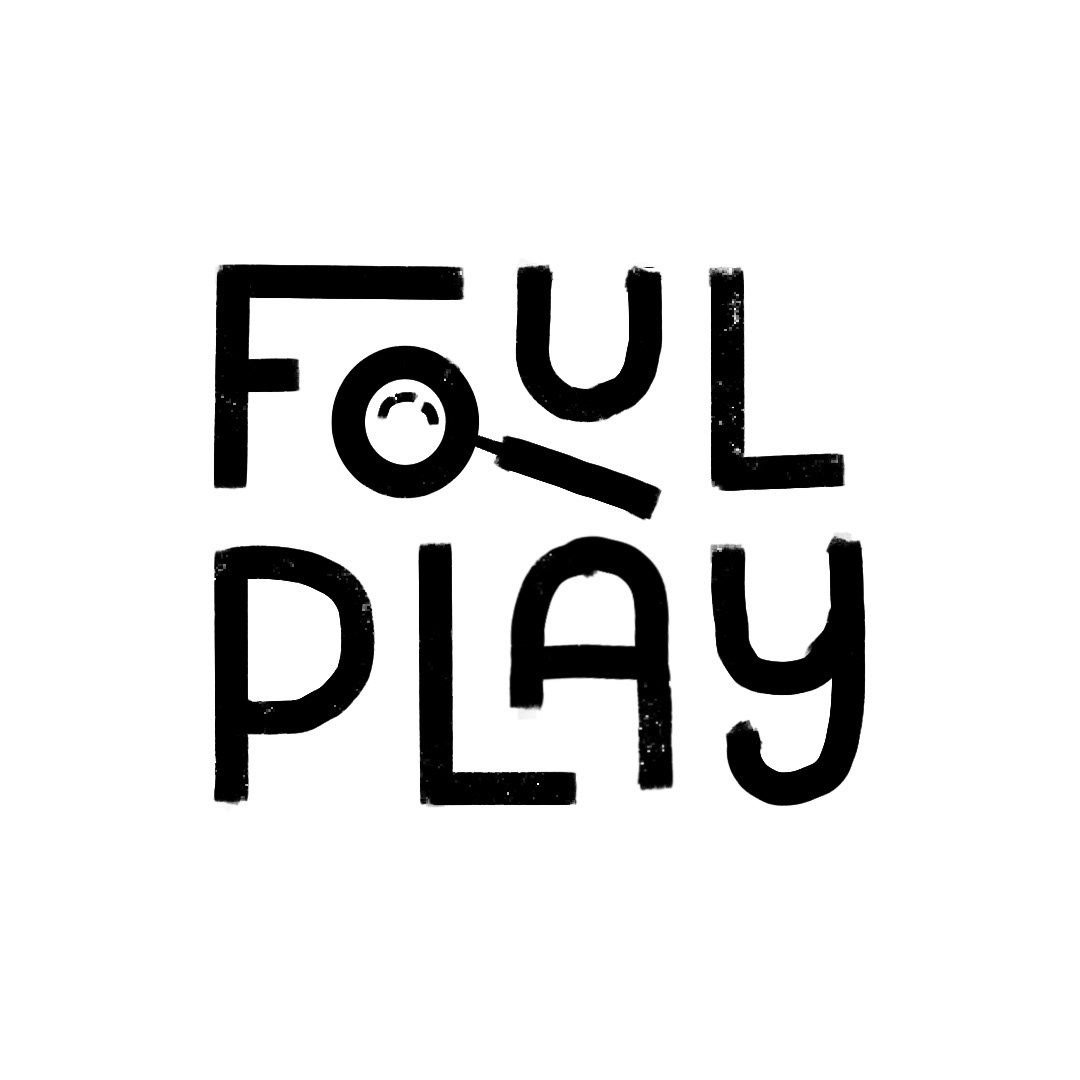
The end result is a sleek and modern logo that captures the essence of the game and sets the tone for a murder mystery experience.
The final logo
THE BOX
The box design for Foul Play was an important aspect of capturing the brand identity and enticing theoretical customers to purchase the product. It needed to convey a sense of mystery and intrigue while also highlighting the fun and engaging nature of a murder mystery dinner party. The box features a bold and eye-catching color palette with large symbols of the game pieces found on the character cards and name tags. The contents of the box are displayed on the back, with imagery and descriptive text that leaves the customer excited to dive in and solve the mystery. The box design serves as the first impression of Foul Play and helps to establish it as a high-quality and professional product.

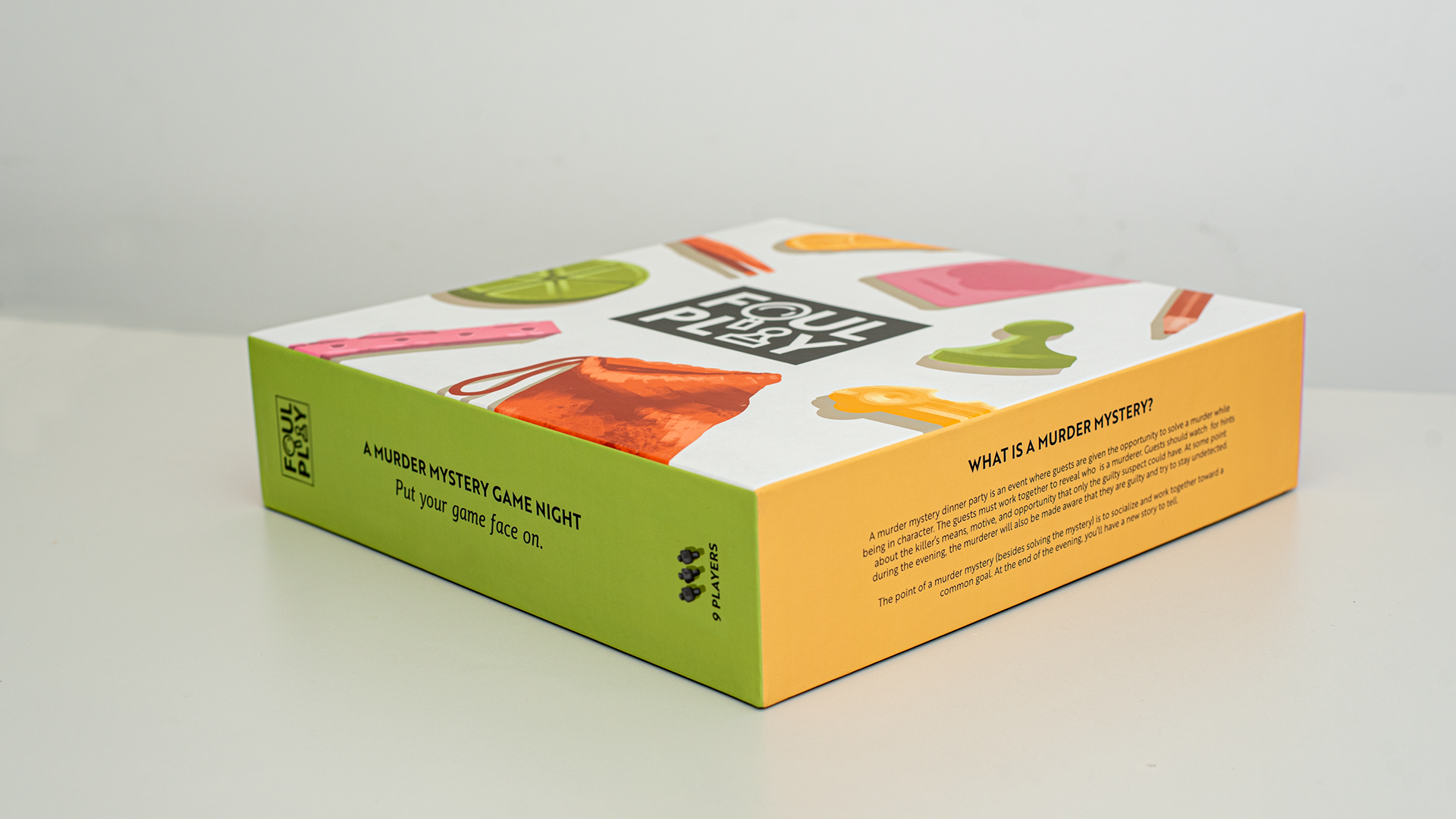
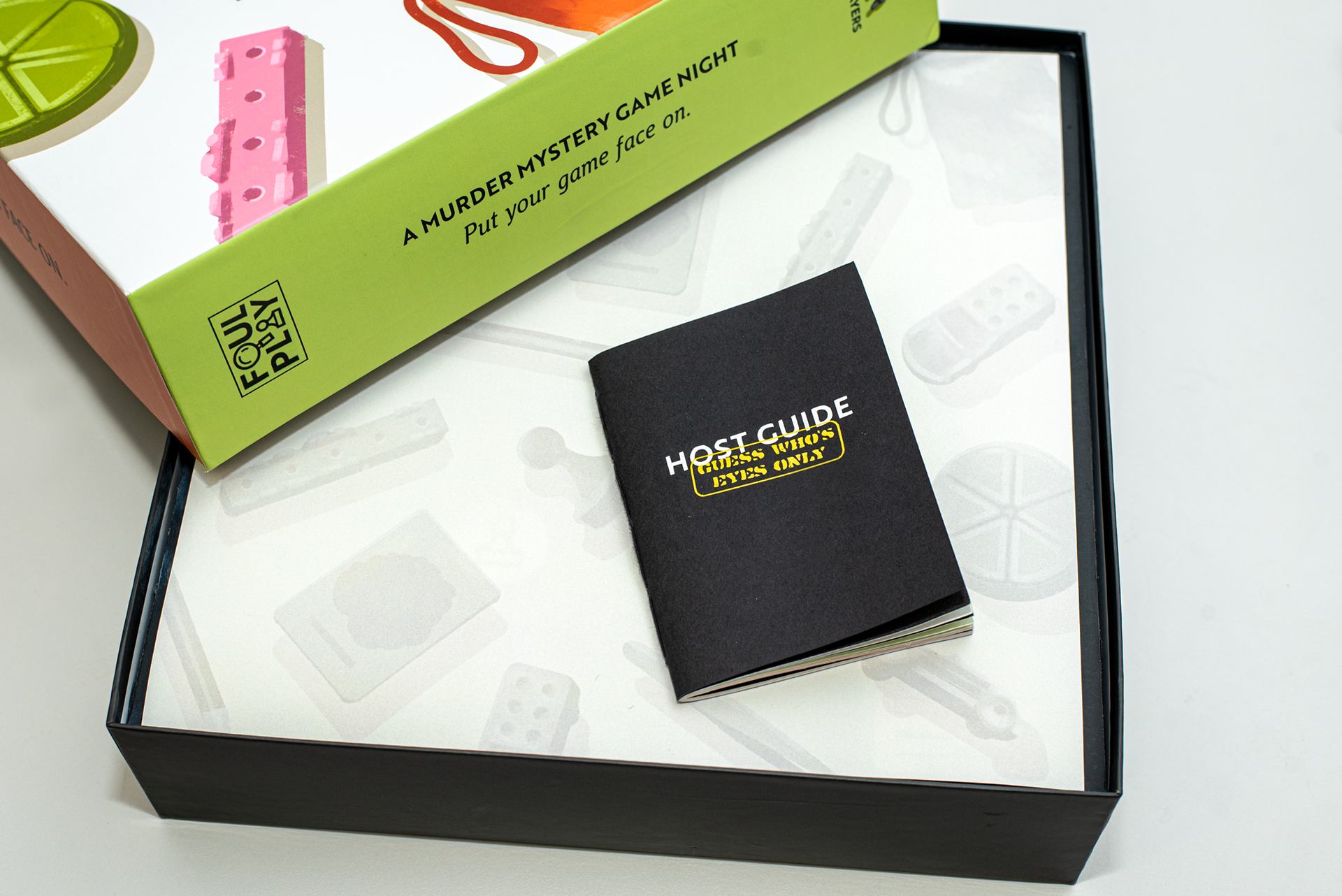
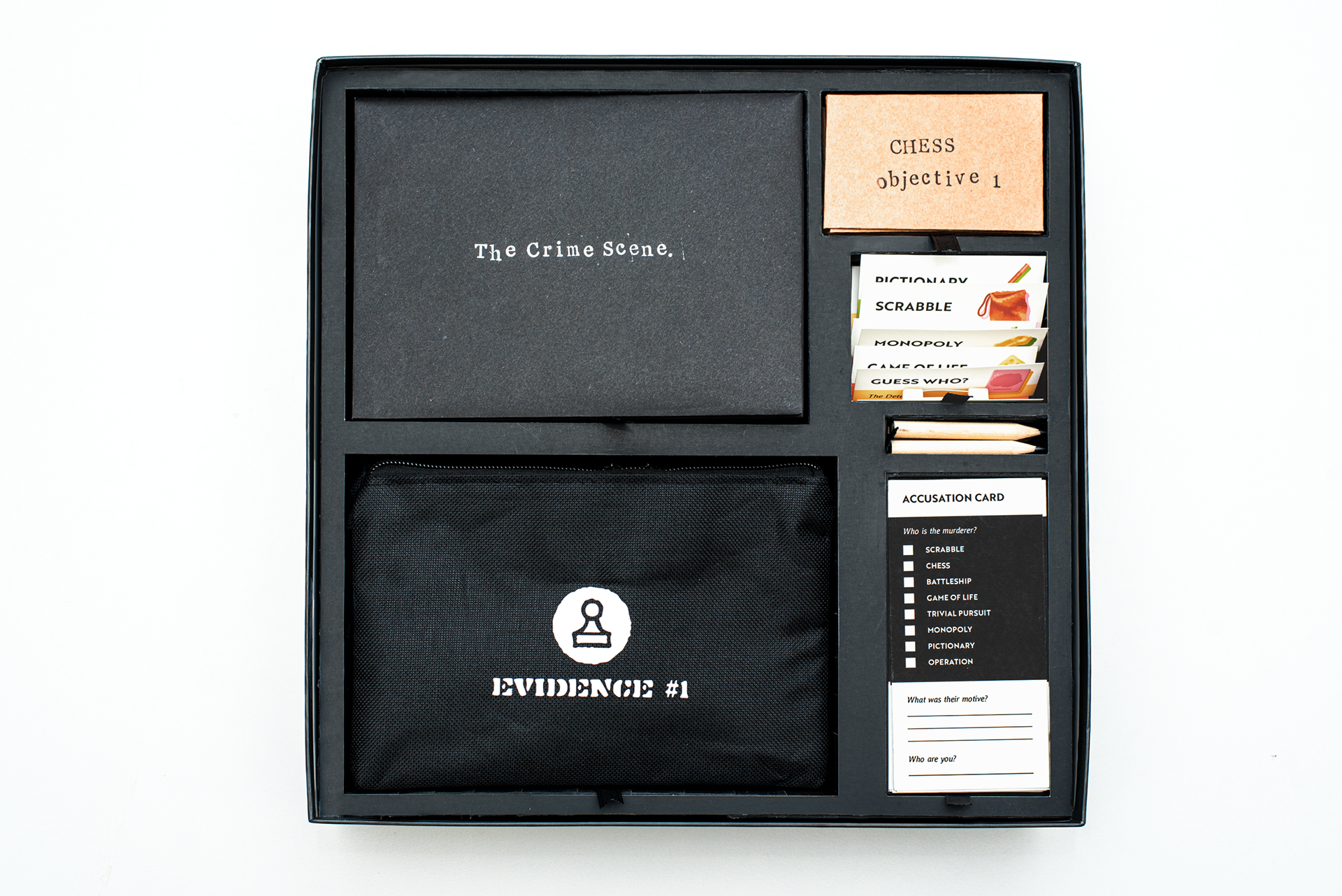
THE HOST BOOK
The Host Guide Book is an extremely important part of Foul Play as it provides the host with all the necessary information to smoothly execute the murder mystery dinner party. The guide book is 48 pages long and organized into two sections: "Before the Investigation" and "The Night Of." The "Before the Investigation" section includes an overview of the game, the host's role, the character of the guests, and the narrative. This section provides the host with a detailed understanding of the game, which is essential in creating an immersive experience for the guests. The "The Night Of" section includes a rulebook, an introductory speech, and information on the three rounds of the game, and ends with "the truth." Having all this information in one place ensures that the host can focus on executing the game flawlessly without worrying about missing any important details. The Host Guide Book is a critical tool for the host in creating a successful murder mystery dinner party experience.
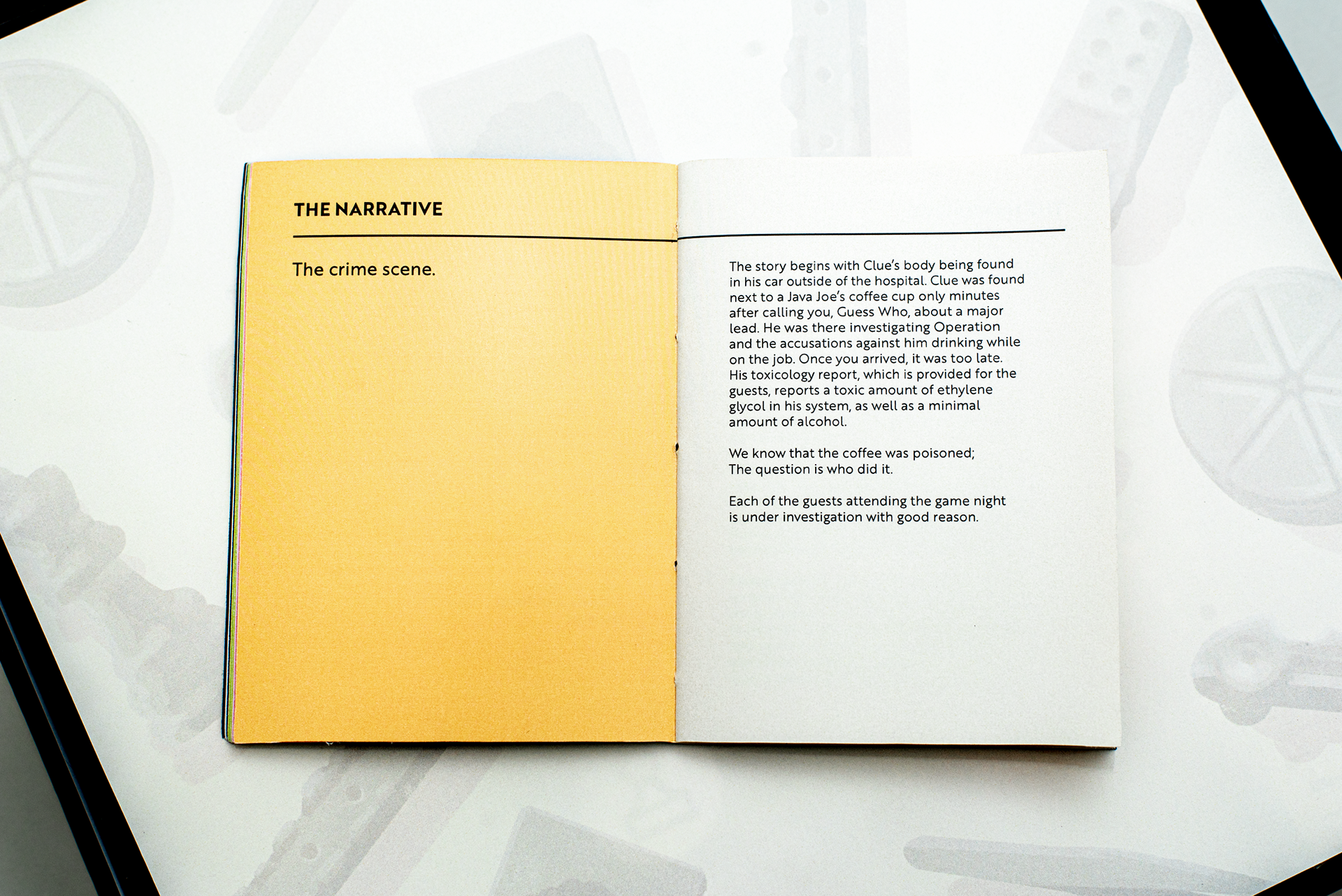
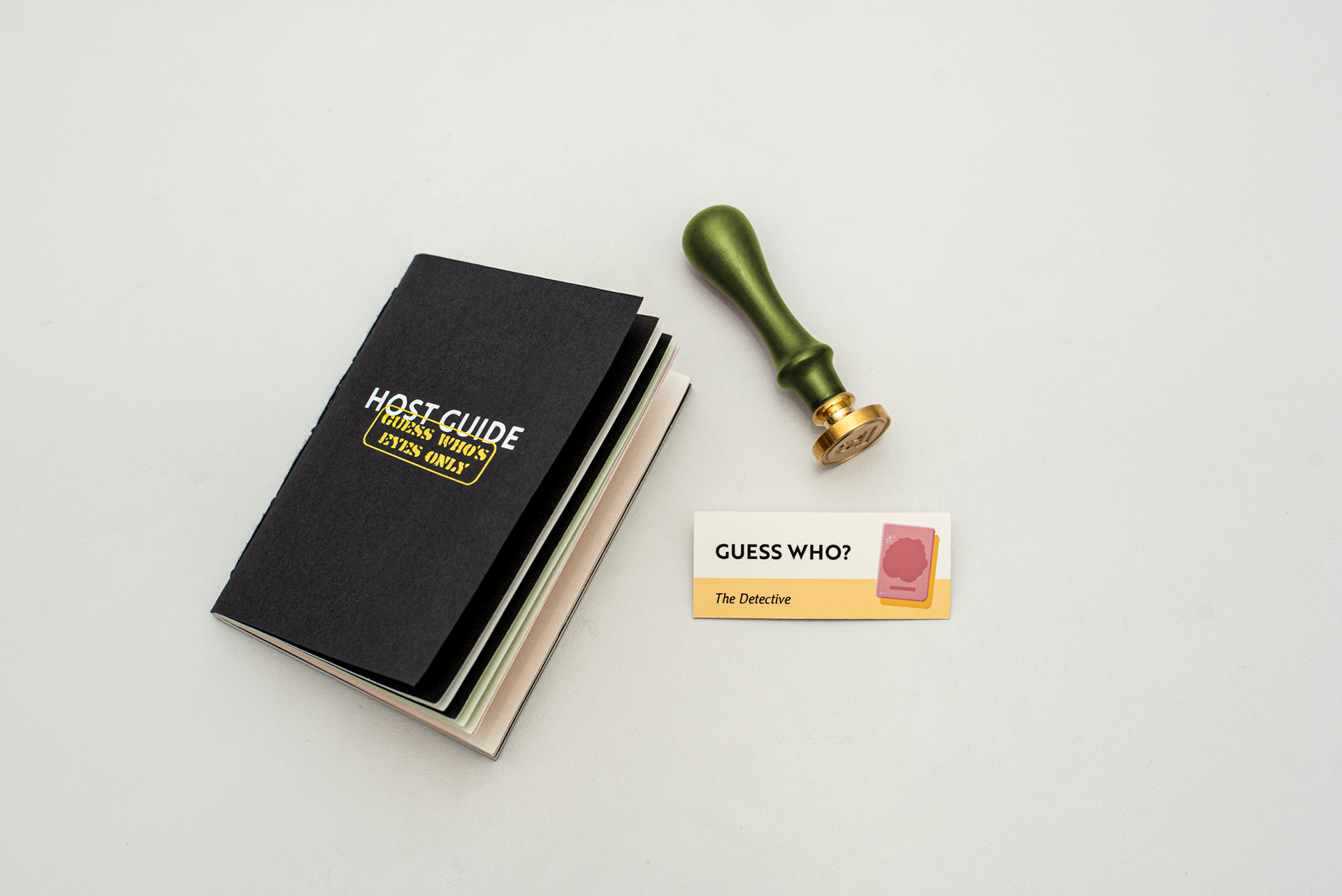
THE INVITATIONS
The invitation design for Foul Play is an integral part of the overall experience. The invitation is designed to set the tone and excitement for the murder mystery dinner party. The invitation includes all the necessary details for the event: Invitation Cards, Character Cards, and a description of what a murder mystery is for those who may be unfamiliar.
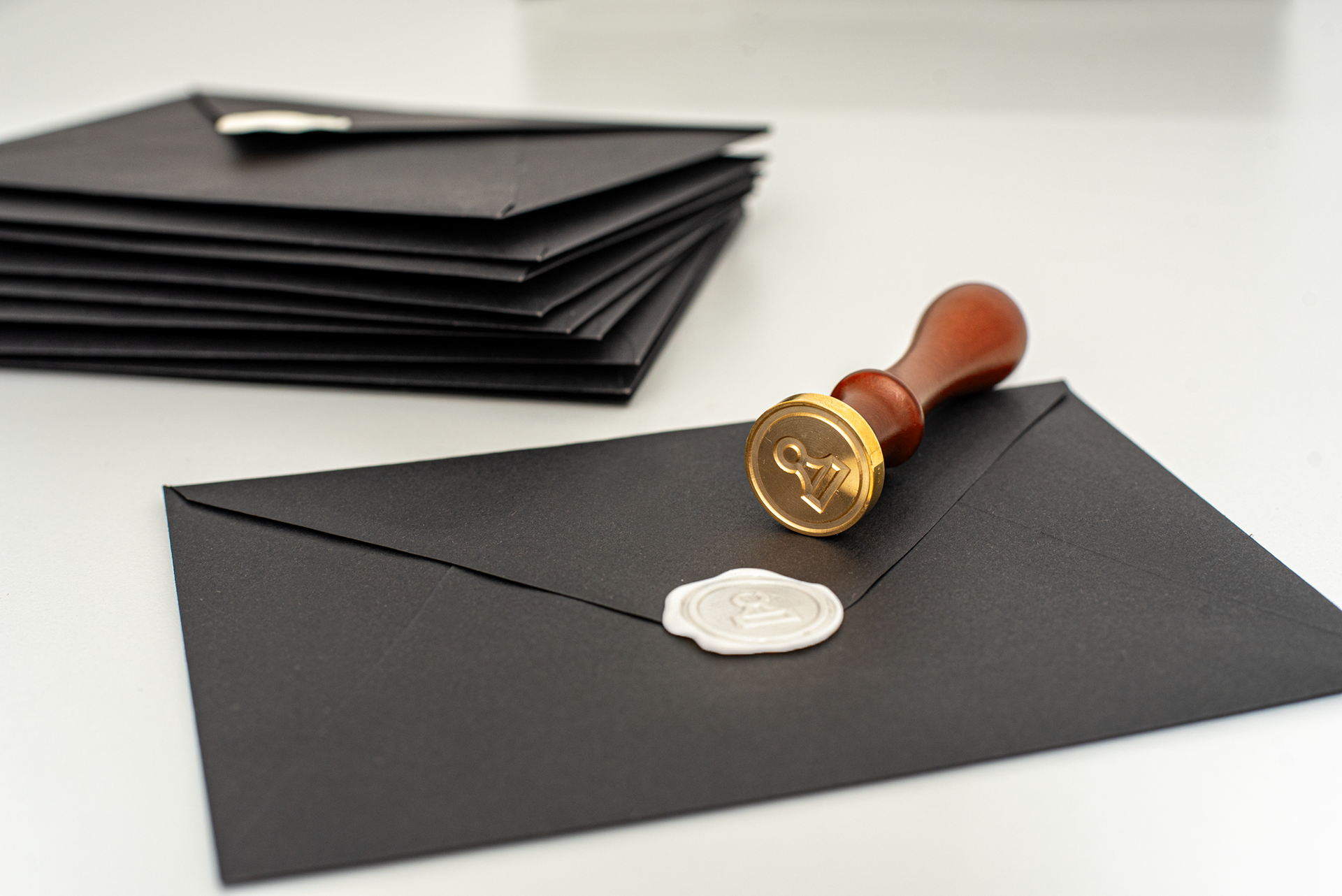



THE CHARACTER CARDS
The character card is provided to describe the guest's character role, appearance, and behavior. The character card is illustrated with the main playing piece used in the character's game using a mid-century modern aesthetic. The details of the card are carefully crafted to ensure that guests can fully immerse themselves in their roles and create anticipation prior to arriving.
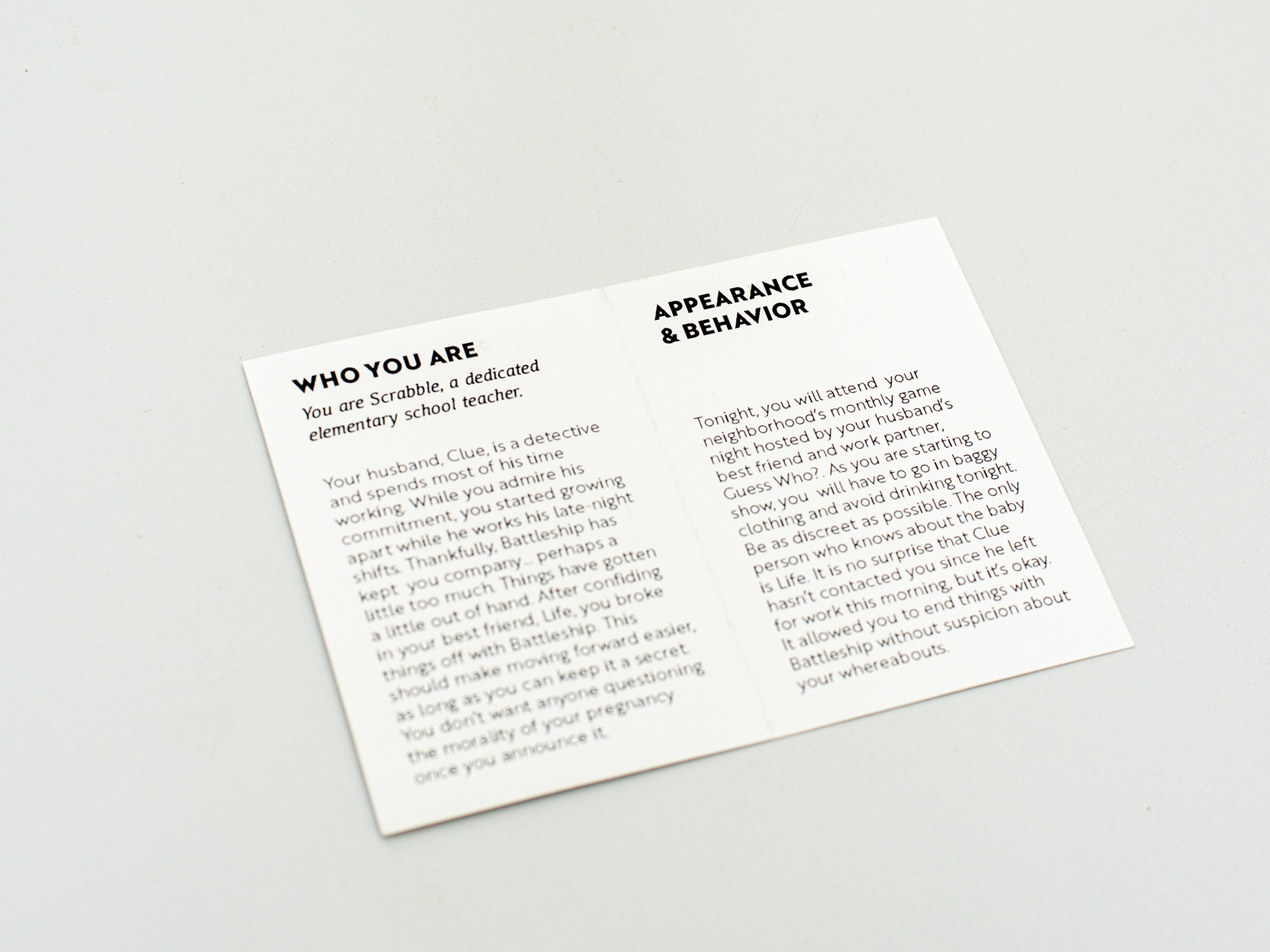
THE OBJECTIVES
Each guest that attends the night is provided with three individual round objectives, tailored to their character, adding a level of deeper conversation to the game and ensuring that everyone is engaged throughout the evening. Each guest receives a name tag and a character card that includes a detailed description of their role, appearance, and behavior. This allows each guest to fully embody their character and get into the spirit of the game. The attention to the design of these elements helps to create a cohesive experience from beginning to end.
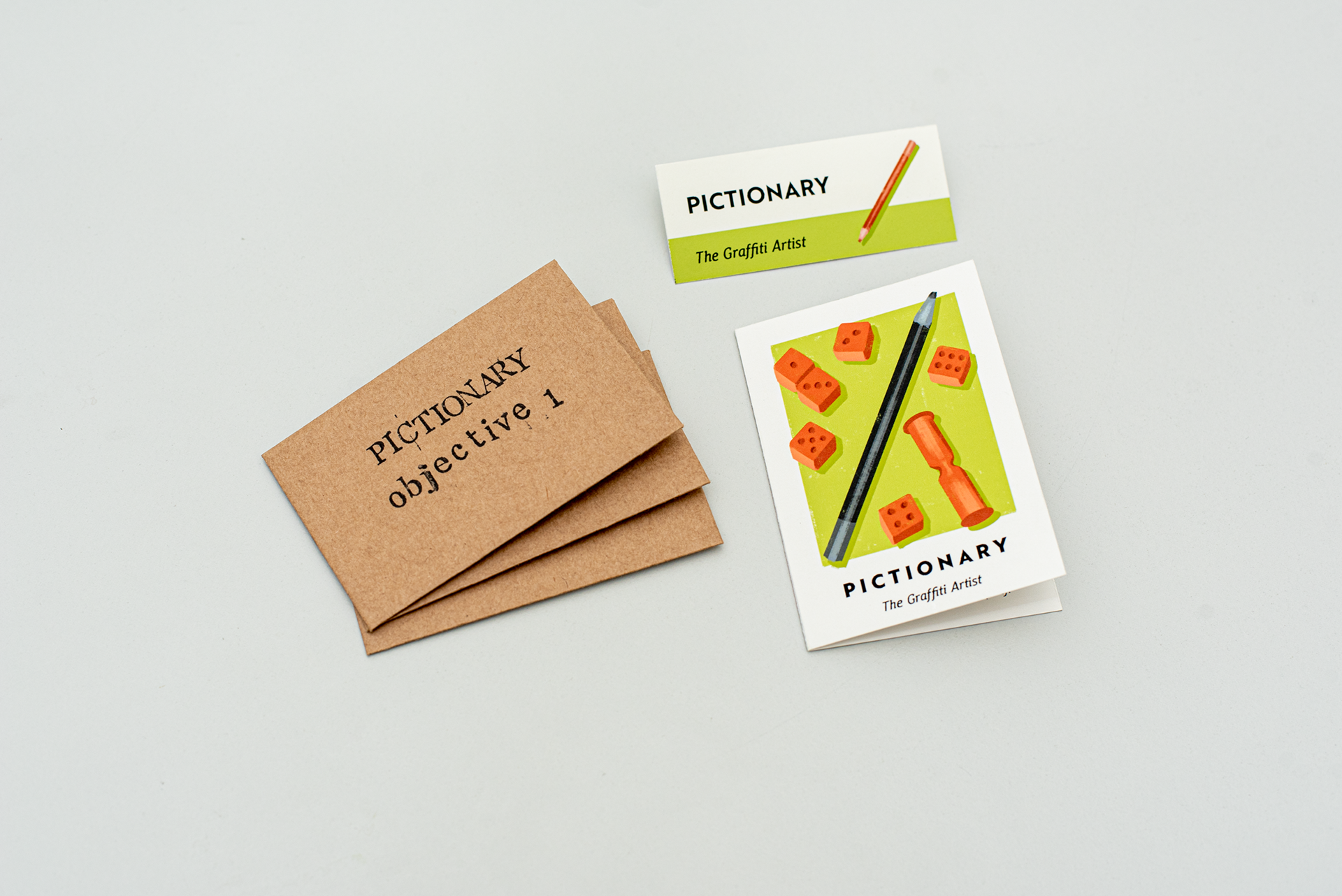


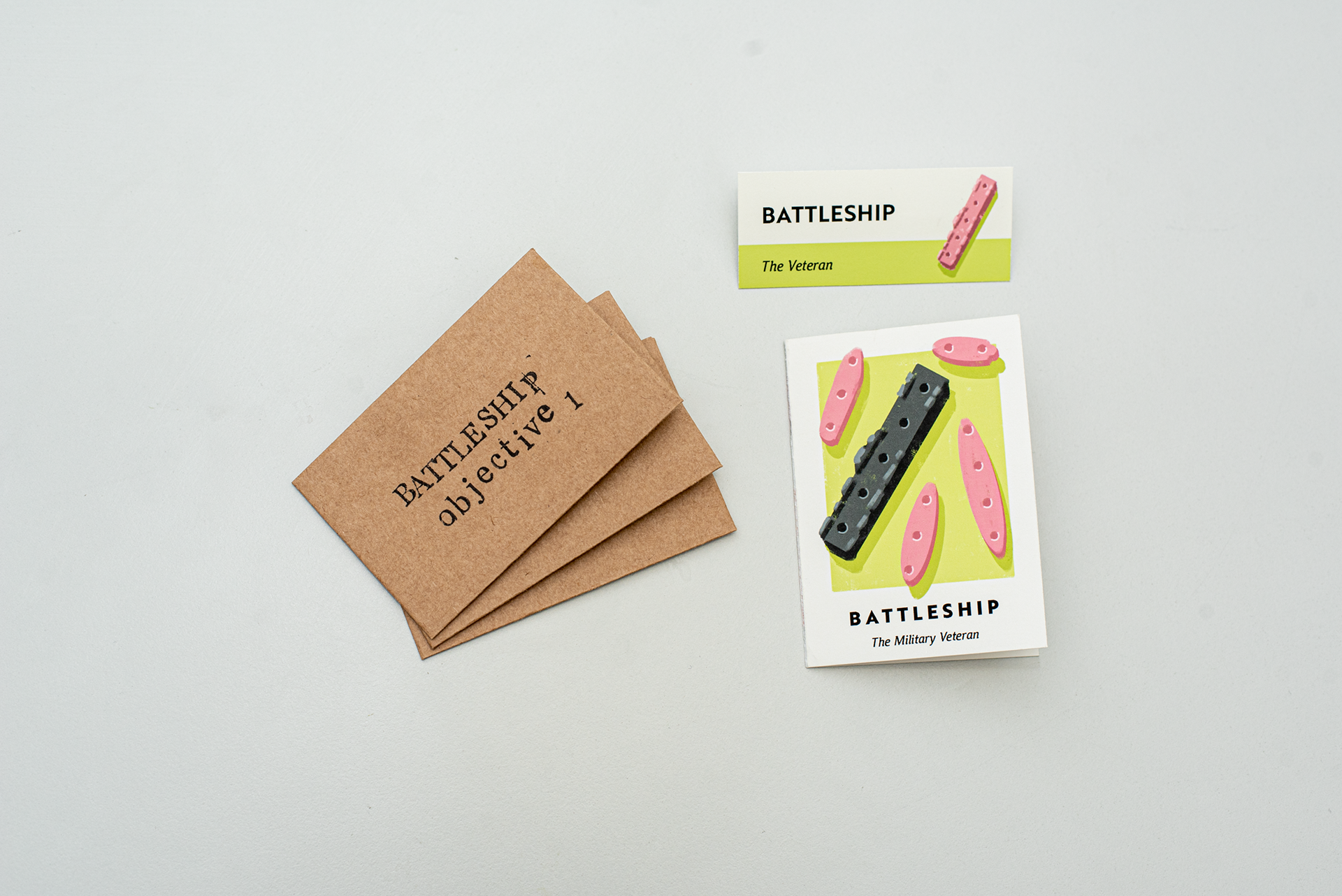
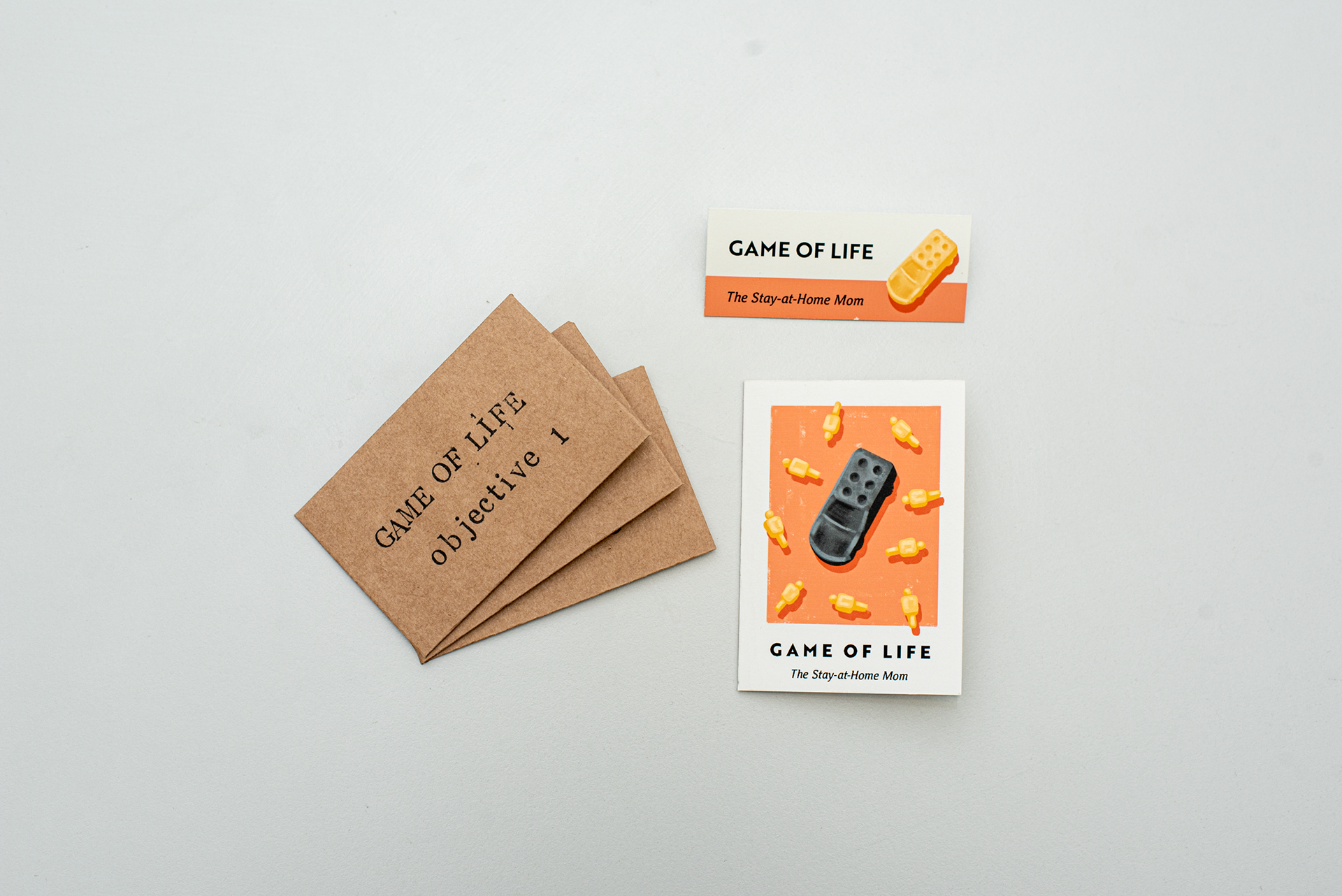

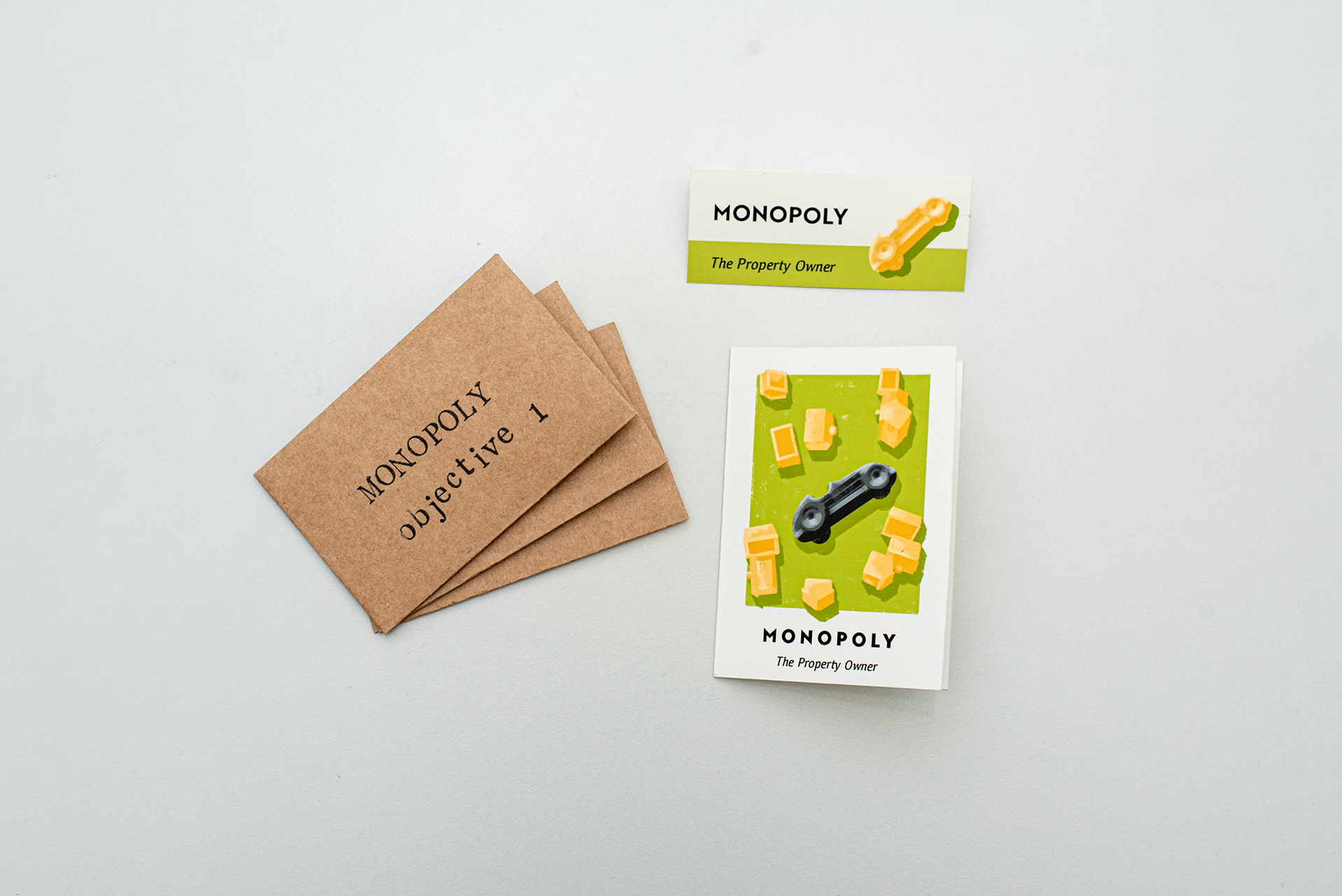

THE CRIME SCENE
The first envelope that guests receive is titled "The Crime Scene". This envelope contains a photo of the body found in the victim's car, as well as a toxicology report indicating that the victim was poisoned. This sets the scene for the murder mystery and provides guests with their first clue as they begin to piece together the events leading up to the crime.
THE EVIDENCE BAGS
Each piece of evidence and clue found throughout the game is designed to not only be intriguing and thought-provoking but also seamlessly fit into the overall brand identity and aesthetic.
EVIDENCE BAG #1
The clue for evidence bag #1 is hidden in Monopoly's objective envelope in the form of Monopoly money. Guests are tasked with using the clue to decipher the code and open the bag. Inside, they will find a set of Scrabble pieces that spell out a word referencing an affair between two of the guests. Accompanying the Scrabble pieces is a screenshot of text messages between the two guests that is very incriminating.


EVIDENCE BAG #2
For evidence bag #2, the clue is found in Trivial Pursuit's objective envelope in the form of a trivia card. Once the code is deciphered, guests can open the bag to find three violation appeal forms for parking tickets, all hand-stamped to maintain the same brand identity as the invitation and objective envelopes. Also included are four photos of graffiti poems written about different guests attending the night, taken from around town. Lastly, there are four transcripts from Monopoly town hall meetings, each featuring different guests and the concerns they have for the neighborhood.
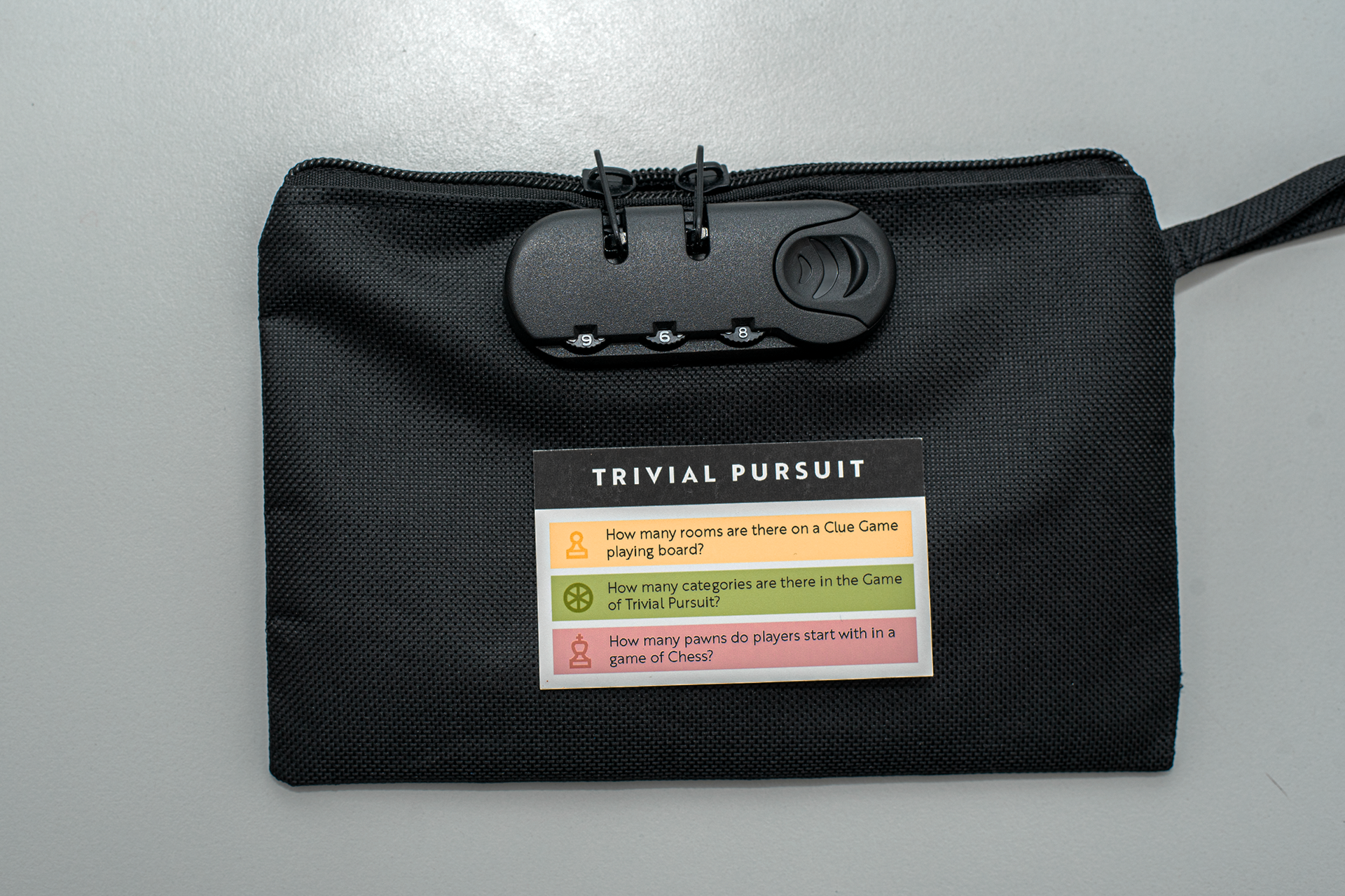

EVIDENCE BAG #3
To open evidence bag #3, guests must use clues from both Pictionary and Operation's envelopes. One clue is a graffiti-scribbled card and the other is a colored film that reveals a code when laid on top of one another. Inside the bag, guests will find a notebook that belonged to the victim, Clue, which follows his footsteps on the day of his death and investigation. Also included is an X-ray from the operation laboratory and a post-operative report.
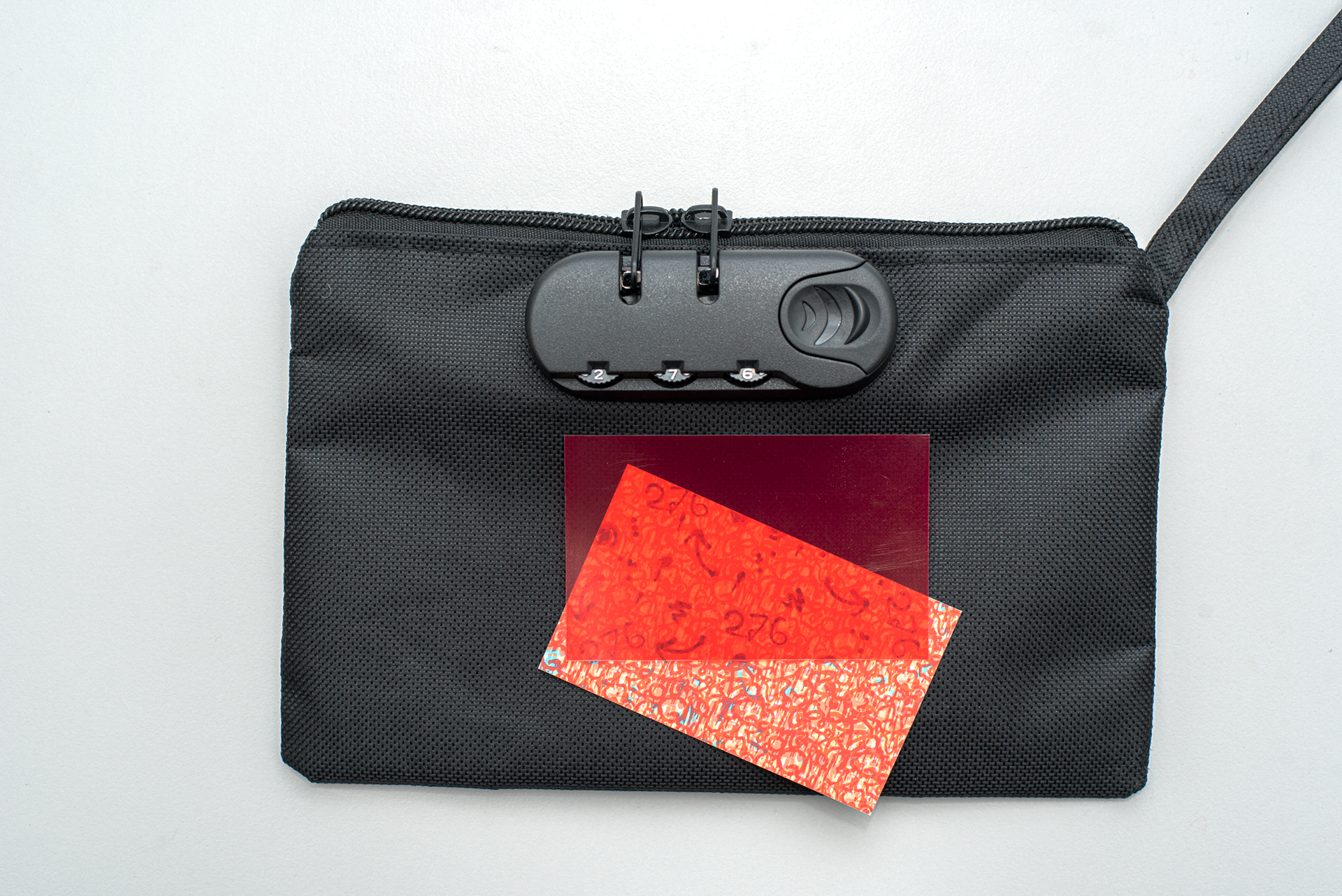



In conclusion, the design process behind the Foul Play murder mystery box was heavily influenced by mid-century modern graphic design. From the logo design to the invitation and box design, every aspect was carefully thought out to reflect the brand identity and create an immersive experience for the guests. I believe that this type of attention to detail and incorporation of different game elements is what sets Foul Play apart from other murder mystery games on the market, making it a truly unique and engaging experience for all players involved. By combining design elements with the mystery genre, the Foul Play murder mystery box provides a unique and engaging experience for all those who love solving puzzles and uncovering clues.
